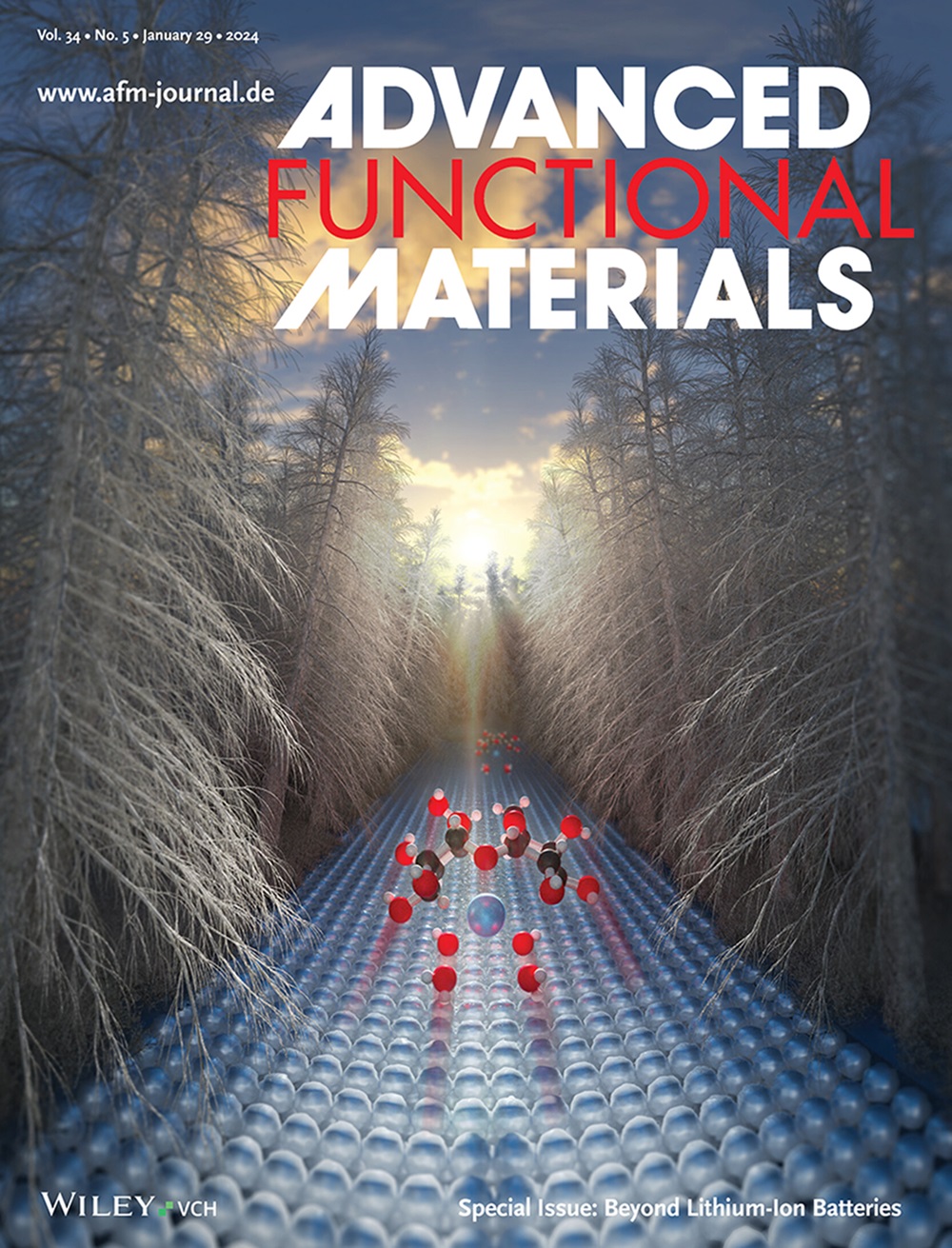Anisotropic Etching Induced Construction of Co‐N4S1 Single‐Atom Sites on 2D Hierarchical Porous Honeycomb Carbon With Enhanced Mass Transfer for Efficient Electrocatalysis
IF 19
1区 材料科学
Q1 CHEMISTRY, MULTIDISCIPLINARY
引用次数: 0
Abstract
The meticulous modulation of asymmetric active sites and the enhancement of mass transfer efficiency are both of paramount importance to the comprehensive performance of single‐atom catalysts. Herein, a facile in situ anisotropic etching induced construction of a 2D monolayered hierarchical porous honeycomb carbon anchored with Co‐N各向异性蚀刻诱导在二维分层多孔蜂窝碳上构建Co - N4S1单原子位,增强传质以实现高效电催化
不对称活性位点的精细调制和传质效率的提高对单原子催化剂的综合性能至关重要。本文开发了一种易于原位各向异性蚀刻诱导的二维单层分层多孔蜂窝碳锚定与Co - N4S1单原子位的结构。这种“二合一”策略不仅实现了Co单原子轴向配位环境的精确调制,而且还增强了多相传质能力和独特的二维单层蜂窝结构提供的催化活性中心的可及性。Co - N4S1配位环境的构建使Co位的d -轨道能级向费米能级移动,降低了速率决定步骤(*NOH→*N)的反应势垒,促进了硝酸还原反应(NO3RR)过程中*N的吸附。通过电化学阻抗谱和分布弛豫时间分析,深入揭示了传质与催化性能之间的复杂关系。金属活性中心调制和传质优化的协同整合显著提高了NO3RR的催化性能(NH3产率为9.46 mg h−1 mgcat−1)和氧还原反应活性(E1/2 = 0.895 V)。
本文章由计算机程序翻译,如有差异,请以英文原文为准。
求助全文
约1分钟内获得全文
求助全文
来源期刊

Advanced Functional Materials
工程技术-材料科学:综合
CiteScore
29.50
自引率
4.20%
发文量
2086
审稿时长
2.1 months
期刊介绍:
Firmly established as a top-tier materials science journal, Advanced Functional Materials reports breakthrough research in all aspects of materials science, including nanotechnology, chemistry, physics, and biology every week.
Advanced Functional Materials is known for its rapid and fair peer review, quality content, and high impact, making it the first choice of the international materials science community.
 求助内容:
求助内容: 应助结果提醒方式:
应助结果提醒方式:


